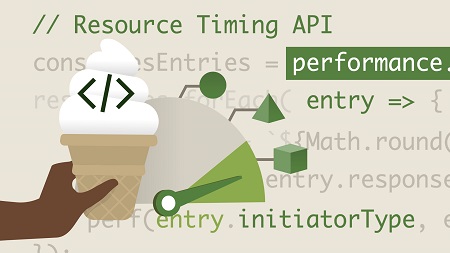
English | MP4 | AVC 1280×720 | AAC 48KHz 2ch | 1h 43m | 326 MB
With the Performance APIs built into modern browsers, you can measure the performance of your websites and applications and make “live” changes to the content, page navigation, and more. This allows you to create a faster and better experience for all your users: for the desktop user on high-speed Wi-Fi or the mobile user with a weak signal. This course shows how to collect real metrics from real devices with the four most useful APIs: Performance Timeline, Navigation Timing, User Timing, and Resource Timing. Instructor Maximiliano Firtman shows how to access and apply the APIs with vanilla JavaScript, and use reactive programming techniques—such as beacons and multithreading—to optimize code so it executes as efficiently as possible.
Topics include:
- Understanding the Performance APIs
- Navigation Timing
- Calculate milestones in the Performance Timeline
- Measuring the timing of navigation, resources, servers, and more
- Reading network and device information
- Optimizing code
Table of Contents
Introduction
1 Optimize APIs with JavaScript
2 What you should know
Reactive Web Performance
3 The need for web performance APIs
4 Summary of what we can do
5 Real user monitoring RUM and reactive web performance
6 Measure time
7 High-resolution timings
Performance Basics
8 Navigation Timing Level 1
9 Understand timings available
10 Calculate milestones in the timeline
11 The Performance Timeline interface
12 Navigation Timing Level 2
Measure Performance
13 Measuring our websites
14 Add the Navigation Timing API
15 Use the Resource Timing API
16 Create custom user timing
17 Get paint timing
18 Detect long tasks
19 Detect frame rate drops
20 Add server timing information
Decision-Making Helpers
21 Read network information
22 Read device memory
23 Save data for your users
24 Receive client hints on the server
Execute Code More Efficiently
25 Send low-priority requests with beacons
26 Understand frame rate execution
27 Execute animation control code
28 Execute background tasks
29 Efficient script yielding
Conclusion
30 Next steps
Resolve the captcha to access the links!